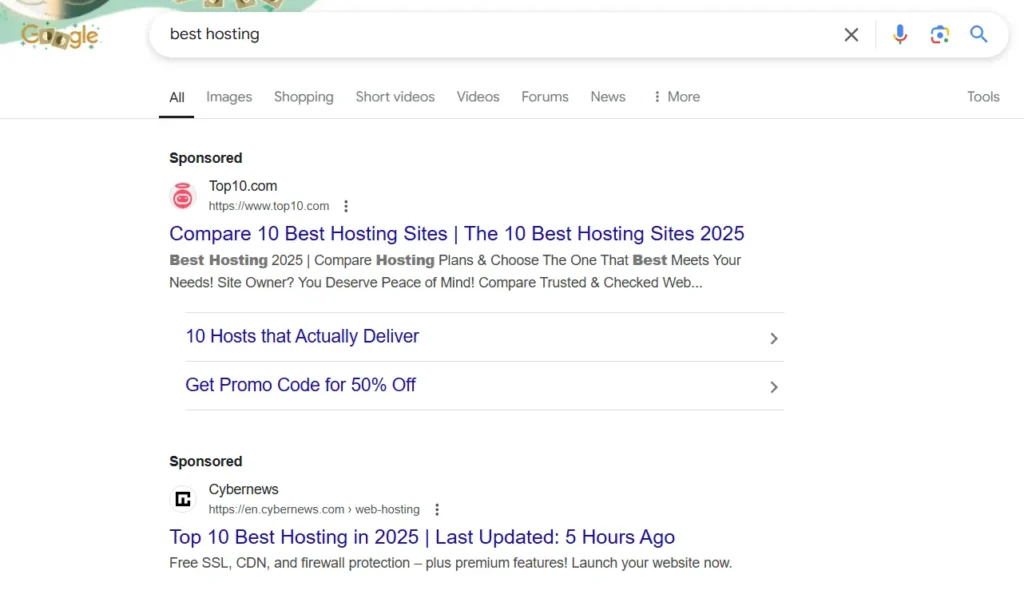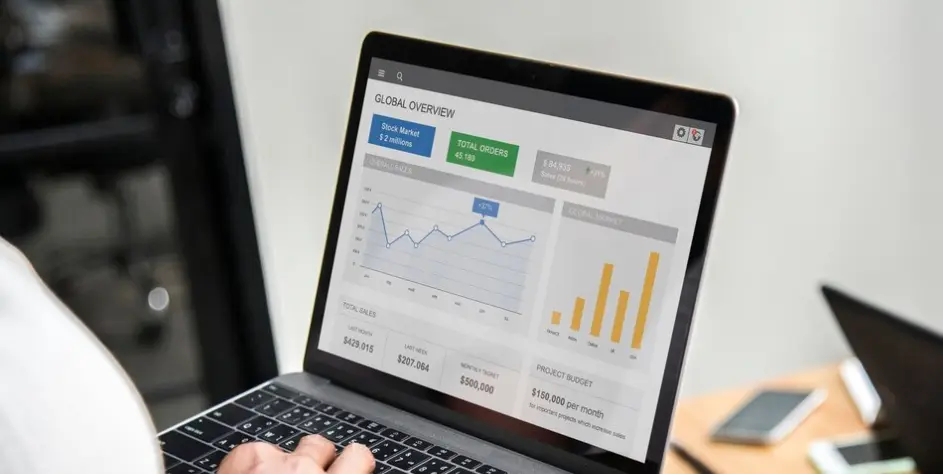Search Engine Marketing (SEM) is a crucial strategy for getting your business noticed online. It offers a way to reach customers who are already actively searching for products or services like yours.
But what exactly is SEM, and how does it fit into your overall marketing strategy?
In this comprehensive guide, we’ll break down what SEM is, how it works, and how it differs from SEO. We’ll also dive into whether SEM is worth trying for your business and how it can help you achieve your marketing goals.
Let’s get started!
What is Search Engine Marketing (SEM)?
Search Engine Marketing (SEM) refers to the process of using paid advertising to increase a website’s visibility on search engine results pages (SERPs).

It involves paid search ads, where advertisers bid on specific keywords, and their ads appear when users search for those keywords. SEM is a pay-per-click (PPC) model, meaning you pay only when a user clicks on your ad.
Key Components of SEM:
- Paid Search Ads: These are text-based ads that appear on search engines like Google, Bing, and Yahoo.
- Keyword Bidding: Advertisers bid on keywords related to their business or products, and ads are shown based on the keywords searched.
- Ad Extensions: These additional features can improve the visibility of ads and increase CTR (Click-Through Rate).
Differences Between SEM and SEO
While both Search Engine Optimization (SEO) and Search Engine Marketing (SEM) aim to improve a website’s visibility on search engines, they are fundamentally different strategies. Here’s how they compare:
1. Organic vs. Paid
- SEO focuses on improving organic (non-paid) search rankings through on-page and off-page optimization (such as keyword usage, backlinks, and technical SEO).
- SEM, on the other hand, is a paid approach that involves bidding on keywords to have your ads appear in sponsored results at the top of the SERP.
2. Timeframe for Results
- SEO is a long-term strategy that requires ongoing effort and can take weeks or months to see measurable results.
- SEM can drive immediate results and is often used to complement SEO efforts, providing fast visibility and instant traffic to your website.
3. Cost Structure
- SEO is primarily free, though it requires time, resources, and expertise to implement successfully.
- SEM requires an ongoing budget, as it’s a pay-per-click model, where you pay every time someone clicks on your ad.
4. Click-Through Rate (CTR) and Conversion
- SEO can achieve high organic traffic over time, but click-through rates (CTR) can be lower since organic listings aren’t always as visible as paid ads.
- SEM tends to have a higher CTR because paid ads appear at the top of search results, giving them better visibility.
Both SEO and SEM should work together as part of an integrated search engine marketing strategy. SEM helps drive immediate traffic, while SEO builds a long-term, sustainable presence on search engines.
Is SEM Worth Trying?
Is SEM worth the investment? For many businesses, the answer is a resounding yes. Here are some reasons why SEM could be a great strategy for your business:
1. Targeted Advertising for Better ROI
- SEM allows you to target specific keywords that align with your products or services, ensuring your ads reach people who are actively searching for what you offer.
- Highly targeted ads increase the chances of clicks and conversions, delivering a better return on investment (ROI).
2. Immediate Traffic Boost
- If your website is new or you’re looking for quick visibility, SEM provides a way to gain instant exposure and drive traffic to your site right away.
- It’s ideal for time-sensitive promotions or for businesses that need to generate leads quickly.
3. Ability to Measure & Optimize
- With SEM, you can track metrics such as impressions, CTR, conversions, and ROI in real-time.
- This allows you to optimize campaigns quickly by adjusting your keyword targeting, ad copy, and bidding strategies based on what’s working.
4. Control Over Ad Spend
- Unlike traditional advertising, SEM lets you control your daily budget and adjust it depending on the performance of your ads.
- You can set a maximum bid for keywords, ensuring you never spend more than your budget allows.
While SEM can be cost-effective and rewarding, businesses must carefully manage their campaigns to avoid overspending.
If you want to maximize your SEM efforts, consider working with our Google Ads specialists from Sydney who can help you get the most out of your paid search campaigns.
How Does SEM Work?
To better understand how SEM works, let’s break it down into simple steps:
1. Keyword Research
The first step in SEM is choosing the right keywords. You need to identify the terms your target audience is searching for. Tools like Google Keyword Planner can help you discover relevant keywords for your business.
2. Bidding on Keywords
Once you’ve identified your keywords, you’ll need to set bids. You decide how much you’re willing to pay for each click on your ad. The more competitive your keywords, the higher your CPC (Cost-Per-Click) will be.
3. Writing Compelling Ad Copy
To encourage clicks, your ad copy needs to be relevant, engaging, and include a strong call-to-action (CTA). Make sure your ad aligns with the keywords and the user’s intent.
4. Optimizing Landing Pages
When users click on your ad, they should be directed to a relevant landing page that matches the ad’s messaging. A clear, easy-to-navigate landing page can significantly improve conversion rates.
5. Analyzing & Optimizing
Once your SEM campaigns are live, use Google Ads’ analytics tools to track performance and make adjustments. You can refine your targeting, adjust bids, and experiment with different ad creatives to improve results over time.
By following these steps and continually optimizing your SEM efforts, you can drive targeted traffic, increase conversions, and achieve greater ROI.
Conclusion
Search Engine Marketing (SEM) offers an immediate and powerful way to increase visibility, drive traffic, and generate leads. Whether you’re looking to target specific keywords, run promotions, or expand your reach quickly, SEM is a valuable tool for businesses of all sizes.
If you’re ready to get started with Google Ads or optimize your current SEM campaigns, our Google Ads specialists can help you create targeted campaigns that deliver results. We’ll ensure your SEM strategy maximizes ROI and achieves your business goals.
Let’s work together to create high-performing SEM campaigns that drive real results for your business. Contact us today!









